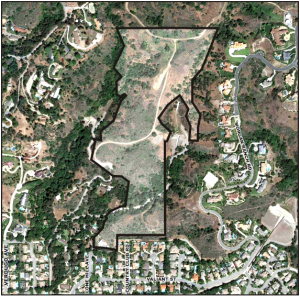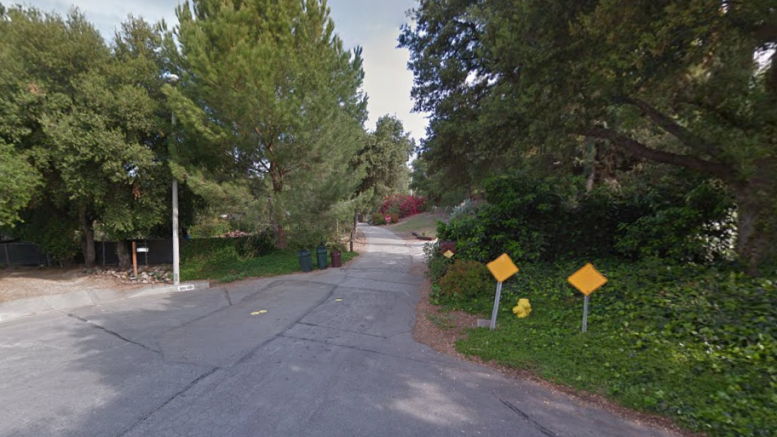City officials recently released a subsequent environmental impact report, summarizing the potential effects to the environment and residents near the proposed 18-home Gordon Mull project in the Glendora foothills.
Pollution levels would reportedly exceed allowable limits set by the Southern California Air Quality Management District. Impacts to plant and tree varieties, some considered sensitive by the California Department of Fish and Wildlife would also occur, with other permanent impacts cited in the draft subsequent EIR.
 The Gordon Mull subdivision, a project that has sat mostly unfinished for roughly 25 years, would bring 18 single-family homes to 41.4 acres of land nestled in the Glendora hillsides, at the end of Lone Hill Avenue, caressing an area around Gordon Ranch Road.
The Gordon Mull subdivision, a project that has sat mostly unfinished for roughly 25 years, would bring 18 single-family homes to 41.4 acres of land nestled in the Glendora hillsides, at the end of Lone Hill Avenue, caressing an area around Gordon Ranch Road.
No permits for construction are approved for the modified project, which varies slightly from the project initially approved.
Maximum daily localized construction emissions that would be generated during construction of the approved project would exceed the South Coast Air Quality Management District threshold of 10.4μg/m3 for PM2.5 (parts per million) and PM10.
Highest pollution concentrations would likely occur at residences located south of the project, near the dead end of Lone Hill Avenue and North of Valiant Street, city staff said. Efforts to mitigate pollution impacts would be insufficient to lower levels below the PM2.5 and PM10 threshold.
Further Reading
EIR Gordon Mull Subdivision Report Volume I
EIR Gordon Mull Subdivision Report Volume II
EIR Gordon Mull Subdivision Report Volume III
The endangered Brodiaea filifolia rests on two of the northernmost lots slated for construction and would suffer indirect impacts, city staff said.
The purple flower, also known as the Thread-Leaved Brodiaea, is not only a California endangered plant species, but is listed under the federal Endangered Species Act, which states “all native species of fishes, amphibians, reptiles, birds, mammals, invertebrates, and plants, and their habitats, threatened with extinction and those experiencing a significant decline which, if not halted, would lead to a threatened or endangered designation, will be protected or preserved.”
The project would also impact approximately 2.6 acres of Coast Live Oak Woodland, 0.1 acres of Purple Needlegrass Grasslands, 0.1 acres of Coast Prickly Pear Scrub, 0.9 acres of Blue Elderberry Stands and 0.1 acres of California Walnut Woodland; all considered endangered species by the California Department of Fish and Wildlife, staff said.
Joan Licari, chair of the Sierra Club’s San Gabriel Valley Taskforce, recently wrote that 176 mature oak trees would have to be removed to make way for the project — in a city that was recently honored as Tree City USA by the Arbor Day Foundation for the 23rd consecutive year.
Approximately 11 wildlife species would also suffer impacts from construction.
“To build these homes on the Gordon-Mull property would destroy recreational opportunities for residents and for growing populations in the wider Los Angeles area — and it would eliminate its value for wildlife forever. If kept as open space, the region would increase an area of contiguous, protected open space for people and wildlife,” Licari wrote.
Mitigation measures would alleviate the direct and indirect impacts to plant and wildlife, except for the brodiaea, which would suffer significant and unavoidable impacts, staff said.
Noise impacts during construction would exceed the 5-decibel threshold, with heavy machinery potentially producing a noise level of 89 decibels. Mitigation efforts would do little to lower decibel levels below significant thresholds, city staff said.
Ann Croissant, director of the Glendora Community Conservancy, is quite concerned with the threats to the watershed, which serves residents in Glendora and beyond.
“There are some very serious issues here that have been completely ignored. This [subsequent EIR] is an inadequate document, because they don’t take into consideration all of the underground elements, such as the watershed and aquifers,” Croissant said.
“The future of our community and our region is based on the amount of water that can be stored underground and we have got to have a link between the surface and underground water, otherwise we run out.”
Croissant added that with the disruption of the watershed in the hillsides, the ability to naturally store water would be gone, requiring the expensive importation of water.
The draft subsequent EIR is out for review and public comment until August 4, after which the city will prepare responses to those comments before a public hearing and certification of the subsequent EIR.
The developer, ZH Glendora, LLC could still movie forward with the project, despite the fact that many protected species could be impacted.
“It’s an approved project already and they have a certified EIR. They could go forward if they go through all the steps necessary to do that,” said Glendora Planning Director Jeff Kugel.
The city’s role is to process the application and it’s up to the property owner and/or developer to mitigate any impacts to the environment, Kugel said.
The city prepared the draft subsequent environmental impact report in accordance with California Environmental Quality Act guidelines due to the passage of time and changes made to the project itself.
The purpose of an environmental impact report is to uncover any issues related to the development and make the public aware of them. Public comment is critical and officials are looking for comments, especially from state and federal agencies, to help guide the city, Kugel said.
The Gordon Mull subdivision goes back to 1989, when the city received an application to subdivide the hillside. A tentative tract map was approved in 1990 to subdivide 71 acres of land into 26 single-family residential lots. An environmental impact report was also prepared and certified by the city.
A final subdivision map was recorded in 1998 and although recorded as one map, the subdivision is split into two separate subdivisions. The eastern portion of the subdivision consisting of seven residential lots has been fully developed for more than a decade, city staff said.
Due to what the city cited as “economic considerations,” the western portion sat undeveloped. Permits were approved for construction in 1998, but expired.
The project has been modified and while it remains generally consistent with the approved project, there are changes. The average size of the buildings pads for the homes increased from 10,994 square feet to 17,221 square feet, city staff said.
An abandoned house at the end of Lone Hill either has been or will be demolished to extend the road into the hills.
Instead of a house, one of the lots in the project would feature a 1.34-acre park.
ZH Glendora, LLC, described as a group of investors, purchased the land from another LLC in 2013 — the same year ZH Glendora filed in the State of California.
A quick online search shows that ZH Glendora, LLC and 10 other companies share a Pasadena address in the 1500 block of Glen Oaks Boulevard — a home in the foothills. The registered agent for ZH Glendora, LLC is Zhiwu Zhuang.
A company called Glendora View Homeowners Association, LLC is also listed at the Pasadena Address, with Zhifeng Zhuang as the listed agent.
The public review period for the draft subsequent EIR will end August 4. Comments on the Draft Subsequent EIR should be submitted to:
Jeff Kugel
City of Glendora
Planning Department
116 E. Foothill Blvd.
Glendora, CA 91741






